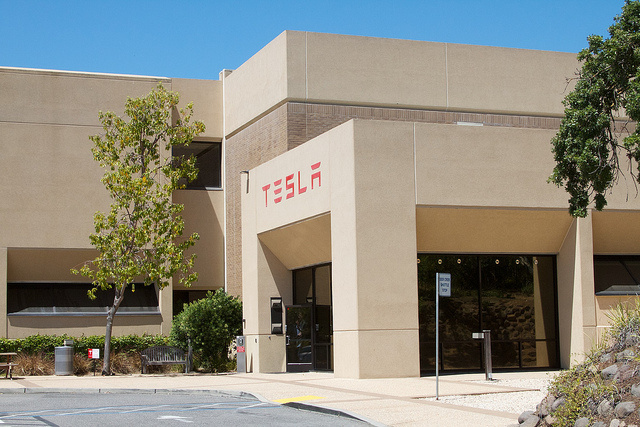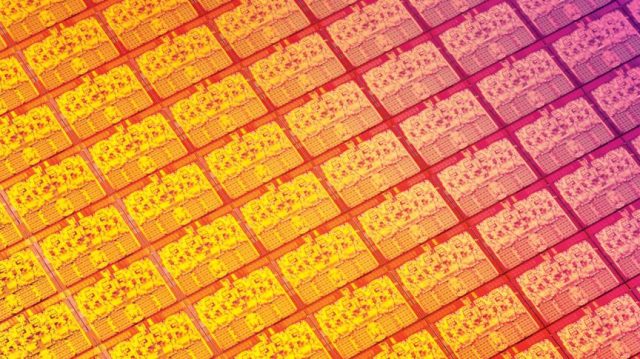New plaintiffs hope to push ahead with a class of people who never used Gmail.
Zwei 14- und gleich drei 10-nm-Prozesse: Intels Fertigungsverfahren entwickeln sich langsamer, dafür konnten wichtige Kunden für das eigene Foundry-Programm gewonnen werden. Durch die Partnerschaft mit ARM wird Intel zur Samsung- und TSMC-Konkurrenz. (Intel, IDF) 

Zwei 14- und gleich drei 10-nm-Prozesse: Intels Fertigungsverfahren entwickeln sich langsamer, dafür konnten wichtige Kunden für das eigene Foundry-Programm gewonnen werden. Durch die Partnerschaft mit ARM wird Intel zur Samsung- und TSMC-Konkurrenz. (
Intel,
IDF)

When you have this kind of growth happening, everyone’s watching and listening.

Google software engineer Benson Leung has become something of a folk hero for his efforts to review USB Type-C cables and let potential customers know whether or not they’re compliant with official specifications. A lot of them aren’t… and some could even damage your phone, laptop, or other device if you try to charge your gadgets using those cables.
Now it looks like the organization responsible for publishing those official specs is going to make things a bit easier for Leung and the rest of us: the USB Implementers Forum has announced a new certification and compliance program for USB chargers.
Continue reading A new certification program could protect you from bad USB chargers at Liliputing.


Google software engineer Benson Leung has become something of a folk hero for his efforts to review USB Type-C cables and let potential customers know whether or not they’re compliant with official specifications. A lot of them aren’t… and some could even damage your phone, laptop, or other device if you try to charge your gadgets using those cables.
Now it looks like the organization responsible for publishing those official specs is going to make things a bit easier for Leung and the rest of us: the USB Implementers Forum has announced a new certification and compliance program for USB chargers.
Continue reading A new certification program could protect you from bad USB chargers at Liliputing.

Initial mod offerings focus on cosmetic and interface tweaks.
Rare crypto implementation in ShadowBrokers dump connects it to Equation Group.
The lightweight materials will increase the amount of payload a rocket can carry.

Microsoft may have tried its best to get Windows 7 and Windows 8.1 users to update to Windows 10 by the end of July, but there are still millions of people using the company’s older operating systems.
So now Microsoft is making it a little easier for those users to keep their computers up to date with the latest security updates and bug fixes. Starting in October, Microsoft will release a monthly rollup with security and reliability fixes.
Continue reading Windows 7 and Windows 8.1 updates are now cumulative (which means fewer individual updates to install) at Liliputing.


Microsoft may have tried its best to get Windows 7 and Windows 8.1 users to update to Windows 10 by the end of July, but there are still millions of people using the company’s older operating systems.
So now Microsoft is making it a little easier for those users to keep their computers up to date with the latest security updates and bug fixes. Starting in October, Microsoft will release a monthly rollup with security and reliability fixes.
Continue reading Windows 7 and Windows 8.1 updates are now cumulative (which means fewer individual updates to install) at Liliputing.

Two of the show’s tech consultants discuss Mr. Robot‘s femtocell v. FBI saga.
Intel has mostly given up on its own phone SoCs.

 Zwei 14- und gleich drei 10-nm-Prozesse: Intels Fertigungsverfahren entwickeln sich langsamer, dafür konnten wichtige Kunden für das eigene Foundry-Programm gewonnen werden. Durch die Partnerschaft mit ARM wird Intel zur Samsung- und TSMC-Konkurrenz. (
Zwei 14- und gleich drei 10-nm-Prozesse: Intels Fertigungsverfahren entwickeln sich langsamer, dafür konnten wichtige Kunden für das eigene Foundry-Programm gewonnen werden. Durch die Partnerschaft mit ARM wird Intel zur Samsung- und TSMC-Konkurrenz. (






